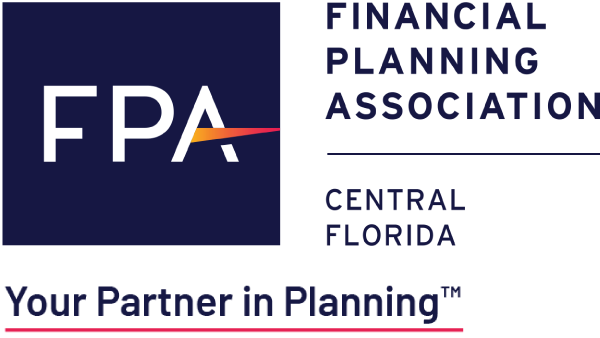
Are You Making the Right Assumptions About Your Money?

Kelvin and Kesha are working with an architect to design their own home, and to do so, they must make certain assumptions. They plan to have children, so their floorplan includes two extra bedrooms. A two-car garage is also a priority, although they have only one car now. And a finished apartment above that garage is part of the plan, too, to accommodate the possibility that at least one set of parents will move in with them as they advance in age.
Making educated, well-informed assumptions — about having children, adding another car and having parents eventually moving into the household — is critical to designing a home, whether or not those assumptions ultimately prove to be accurate.
The same holds true when designing a financial “house.” As much we’ve heard the old bromide about the pitfalls of assuming things in life, any well-thought-out financial plan must necessarily incorporate certain assumptions, even if those assumptions may need to be revisited and revised as circumstances change.
In the context of financial planning, making assumptions “is the nature of the beast,” says Richard Colarossi, CFP®, of Colarossi & Williams Financial Advisory Group in Islandia, NY. “You can’t move forward without them. You just have to be sure you understand the basis of the assumption you’re making, that you have a rationale for making a particular assumption, and that you get as close to reality as possible with that assumption.”
Also be ready to adjust on the fly “because there are so many variables that can change the assumptions you make,” he says. “I recommend reviewing [financial plan] assumptions at least annually, so if things have changed, you can adjust accordingly.”
Here’s a look at five key assumptions that factor into the financial planning process and how each fits in the context of a broader financial blueprint.
- Life expectancy. Outliving one’s assets — running out of money, in other words — is perhaps the biggest fear people harbor about retirement, particularly with lifespans in the U.S. generally trending higher over recent decades (the slight declines of the past two years notwithstanding). This is what’s called longevity risk, and to account for it in in the context of a financial plan, an assumption about life expectancy is required, “so you know roughly what you’ll have [in terms of assets], at what age.” Today financial professionals recommend building a life expectancy of at least 90, and perhaps 95 or 100, into a financial plan, then modifying that number if necessary based on family history and other factors. Such an assumption merely recognizes the latest U.S. government data indicating that one out of every four 65-year-olds today will live past age 90, and one out of 10 will live past age 95.
- Rate of return on investments. This assumption essentially projects how much the value of your assets will grow (or not grow) annually, on average, over time. It’s necessary to project with some level of accuracy how much your assets, including retirement account(s), investment portfolio, etc., will be worth at a certain point of time, such as at retirement. Like most assumptions used in financial planning, it’s important to project conservatively, because an overly aggressive assumption can undermine the integrity of a financial plan. So while a recent analysis by T. Rowe Price found that from 1928 to 2016, stocks grew annually by an average of 8.6 percent after inflation, financial professionals tend to prefer a lower growth rate assumption, such as 2% above inflation, for a balanced portfolio of stocks and bonds.
- Inflation. This is the rate at which the price of goods and services rises. The inflation rate directly impacts how far a person’s dollars will go, which is why it’s important to build an assumption about inflation into a financial plan. The higher the inflation rate, the lower a person’s purchasing power. That’s a particularly important consideration for people on a static income, such as retirees. Many financial professionals use a baseline inflation assumption of 3 to 4 percent (inflation in the U.S. has averaged slightly more than 3 percent over the past century), then adjust to fluctuations in the inflation rate as needed.
- Expenses/cost of living. If income and assets are the supply side of the financial planning equation, expenses are the demand side. That equation becomes especially important in the context of retirement planning, when it’s important to make an accurate assumption about expenses, including hard expenses (food, shelter, clothing, health care, utilities, transportation, etc.), discretionary spending for travel and other leisure pursuits, and contingencies such as taking care of a parent, losing a job earlier than expected, etc. This projection of expenses informs (and dictates) other areas of a financial plan, such as how much to set aside toward goals like retirement or a child’s college education.
- Health care expenses. The tab for health and medical care can be steep for individuals and families of all ages. But the financial burden can be particularly heavy for retirees. Total projected lifetime health care premiums (including Medicare, supplemental insurance and dental insurance) for a healthy 65-year-old couple retiring in 2017 are expected to be about $322,000 in today’s dollars, according to a report from HealthView Services. With deductibles, copays, hearing, vision and dental cost sharing, that figure rises to $404,000. What’s more, the U.S. government projects health care costs will grow at a lofty rate of 6 percent annually for the next decade. Given those numbers, financial professionals recommend building a health care cost assumption into a retirement plan, along with measures (such as investing in some form of insurance that offers long-term care coverage) to protect assets from a potentially financially draining need for long-term care.
As much as people may hesitate to make assumptions because of the risk they’ll turn out to be off the mark, it’s next to impossible to build a solid financial plan — or a home, for that matter — without making these and other important assumptions. For a financial plan to remain viable over the long term, the assumptions built into it must be relevant, well-supported and appropriately applied. They also must be revisited regularly and adjusted as needed. That’s where a financial professional can help. To find a CFP® professional in your area, visit the Financial Planning Association’s searchable database at www.PlannerSearch.org.

